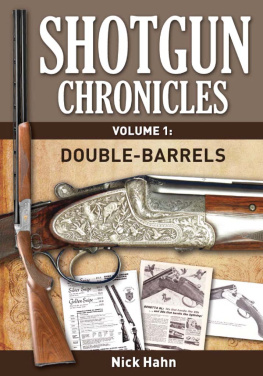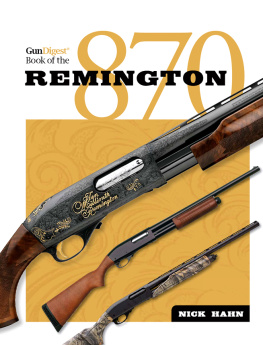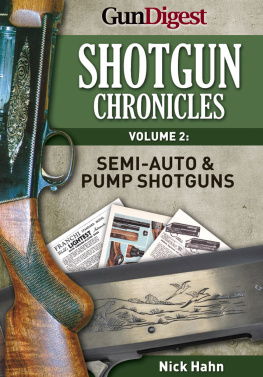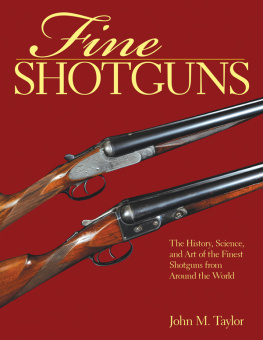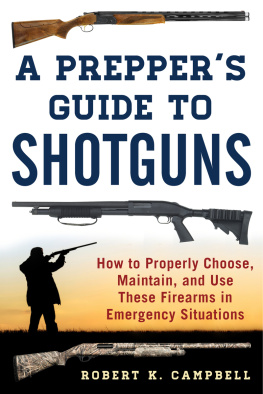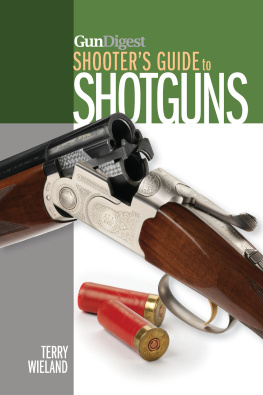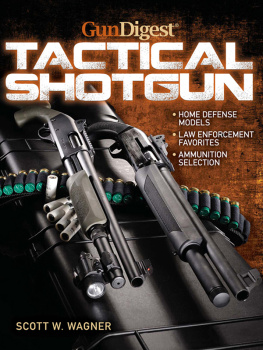Thank you for purchasing this Gun Digest eBook.
Sign up for our newsletter and receive special offers, access to free content, and information on the latest new releases and must-have firearms resources! Plus, receive a coupon code to use on your first purchase from GunDigestStore.com for signing up.
or visit us online to sign up at
http://gundigest.com/ebook-promo
Foreword
By Nick Hahn
The shotgun articles that appear in the Shotgun Chronicles Volume I were all previously published in the Double Gun Journal. I am very much indebted to Joanna and Daniel Cote, the owners and publishers of the Double Gun Journal, for allowing me to republish these articles in this collection.
The idea of writing articles about shotguns occurred to me many years ago, indeed, ever since I became interested in shotguns and started reading all available articles in the gun press of the era, back in the late 1950s and early 1960s. However, as much as I might have been interested in writing articles about shotguns, I had neither the experience nor sufficient background to compose anything that would have been credible. I knew that I had to gain more experience both in shotguns and in writing before I could attempt anything. By the time I was in college, I had gained quite a bit of experience with shotguns, but still I felt it was not enough. As a graduate student, I began to publish essays and short stories, but nothing about shotguns. It wasnt until I retired from my career as a Foreign Service Officer, more than 40 years after my initial interest in shotguns, that I decided to give the article writing a try. As luck would have it, my very first article on shotguns that I wrote was one I submitted to the Double Gun Journaland it was published! I have been writing for them ever since, for more than a decade.
The articles that appear in this collection are mostly about over/under shotguns of middle to lower middle price range. In other words, they are the double guns that are most popular with the vast majority of double shotgun users in America. They are not the best guns, although some of the guns discussed could definitely be classed in that category in their higher grades. For example, although a Merkel 200E is a fine gun, it is not a best gun. On the other hand, the high-grade 303E, especially those in the Special or Deluxe versions, would certainly fit the best class. The same thing can be said of the very popular Belgian-made Browning Superposed. In its Grade I or even Midas Grade versions, it cannot be considered a best. However, there are some Exhibition Grade Superposed models that could very well compete with any best shotgun on the market.
Be that as it may, the articles are mostly about guns an average American shotgunner can own or aspire to own without having to take out a second mortgage on the house or dip into the kids college fund and family life savings. Some may require skipping lunches for a while or cutting some corners here and there, but, nevertheless, they are all affordable.
During my lifetime I have been fortunate enough to have lived and shot on five continents and have visited various gun manufacturers. I have seen shotgunning in all sorts of circumstances and conditions, gun stores that would rival the old Abercrombie and Fitch (not the trendy, todays A&F!) down to hole-in-the-wall kind of shops that had rusty old relics for sale. I have owned and shot well over 100 different shotguns in my lifetime thus far, so I do feel qualified in expressing my opinion on the guns I selected to write about.
Finally, Jennifer L.S. Pearsall, Editor at Gun Digest Books, was most instrumental in getting this collection organized and sorted, so that it would make for a readable book. Having worked with Jennifer previously on the Gun Digest Book of the Remington 870, I was already well aware of her skills and talents. Therefore, it was no surprise to me to once again see the efficiency and professionalism with which she tackled this project. I am most grateful to her.
Nick Hahn
Litchfield Park, Arizona
Spring 2013
CHAPTER 1
The Japanese Invasion
The Japanese invasion of the United States did not take place during World War Two when the two countries fought each other in a bloody war. The closest the Japanese troops got to the U.S. was when they landed and occupied Attu and Kiska Islands of the Aleutian Island chain in 1942, only to be chased off by a U.S. Task Force (the Kiska Task Force).
However, there was a different invasion that took place, about 15 years after the end of the war. This invasion took the form of consumer goods entering the U.S., and in some cases literally monopolizing the market. The Japanese began their invasion with small electronic products and hit it big with transistor radios in the early 1960s. By mid 1960s Honda, along with Yamaha, became household names for motorcycles and by late 60s Toyota and Datsun became established in America.
Meanwhile, beginning in the late 1950s, some small importers began to sell Japanese made shotguns. The numbers were very small, and most American gun enthusiasts had never heard of the Japanese brand names. Perhaps the first major importer of Japanese shotguns was Stoegers who sold for a while SKB Royal side by sides.
The gun that started the Japanese invasion in America, the Charles Daly Miroku from the early 1960s. Note the similarity of engraving pattern with the Winchester Model 101 that appeared a few months later. Also note the half-plate forearm iron, just like the one on the early Winchester Model 101.
In early 1963, Charles Daly, who before World War Two imported German and Belgian made guns, began to sell Japanese over/under shotguns made by a company called B.C. Miroku. The Japanese made Daly over/unders were an immediate success. They were well made, designed to American tastes, and cost less than the much revered Browning Superposed. The Daly (Miroku) not only looked like the Browning Superposed, but much of its design was copied from the famous Browning. Before the year was out, Winchester introduced its Japanese made over/under, the Model 101. The Winchester Model 101 became a huge success. Not to be left behind, other American gun makers tried to find a supplier in Japan. Ithaca struck up a deal with SKB and began importing several models of over/under and side by side shotguns, and Browning began negotiations with Miroku in the 1960s. With rising labor costs in Belgium, the cost of the Superposed was getting out of hand. Browning could see that Mirokus guns were of very high quality and could be made and sold for much less than the Belgian version. Browning finally concluded their negotiations with Miroku in 1966 but the first guns, single barrel trap gun BT-99, did not begin to arrive until 1971. Brownings arrangement with Miroku put an end to Charles Dalys involvement with the Japanese company. As soon as Mirokus contract with Charles Daly expired in early 1970s, Miroku began making guns for Browning exclusively. The rest is history. Just about all of Brownings shotguns and rifles are made by Miroku today.

